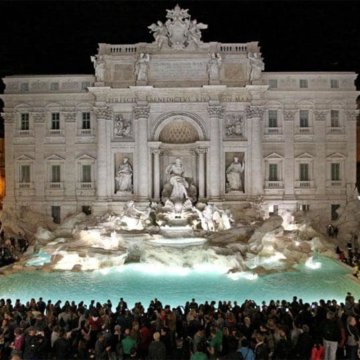- About
- Topics
- Picks
- Audio
- Story
- In-Depth
- Opinion
- News
- Donate
- Signup for our newsletterOur Editors' Best Picks.Send
Read, Debate: Engage.
Roman aqueducts are among the most impressive monuments from the ancient world. Not only do their size, but their practicality and civic-oriented function move us. The same can’t be said for Rome’s modern equivalents, which are chronically leaky. Plus the rest of the infrastructure is decaying and decades-old. Add to that one of the driest seasons in the past sixty years, and you have it: Rome is facing a water shortage.
Romans are likely to have to ration water by the end of the week. This might not sound like such big news given so many modern cities and countries often impose ‘hosepipe bans’, reminding their citizens that excessive water use is not allowed. However, such bans only occur during seasons of extreme heat - when we have heatwaves, or a particularly dry summer, for example. During these times, the city would tap up its emergency water supply, if it had to, and revert to the main water supply once it started raining again and temperatures cooled.
However, Rome is different. Not only has it exhausted its main water supply, it’s been using its emergency water supply on and off for several years (having experienced a few years of high heat); furthermore, the infrastructure it uses to regulate and control water is actually losing water all throughout the circuit. Water is simply dumped into the soil to be absorbed or evaporated, blown across the land, and maybe fall as rain in the Swiss Alps.
The Guardian Reports “meteorologists noted on Sunday that Italy had experienced one of its driest springs in some 60 years and that some parts of the country had seen rainfall totals 80% below normal. Among the hardest-hit regions was Sardinia, which is seeking natural disaster status.”
Natural disaster status! In modern, 21st Century Europe. It is possible - believe it! Agriculture has been devastated across the region. In other regions, so has parmesan cheese production and prosciutto - meaning some of the country’s most famed exports are likely to suffer.
Romans have had to listen to a political and commercial back and forth between lawmakers and water companies, with no concrete solution, other than staggering supply being put forth. We’ll have to wait to see if further help from the outside world will be necessary. Until then, think of Rome as a kind of horrifying stand-in for those places in the world without regular water supply.
Check out wateraid here.
